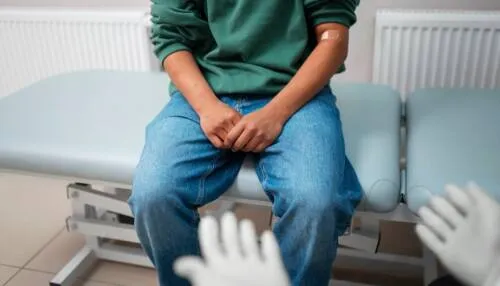Dehydration, Stress & Ignorance: Male UTI Surge in India

Dehydration, Stress, and Ignorance: What’s Behind the Male UTI Surge in India

Once considered a predominantly women’s health issue, urinary tract infections (UTIs) are now emerging as a growing concern among Indian men. In the past few years, hospitals in urban India have reported a three- to four-fold increase in male UTI cases. While less common in men, UTIs in males are often more complicated and can be linked to deeper medical issues such as kidney stones, prostate enlargement, or chronic illnesses.
Understanding Urinary Tract Infections in Men
A urinary tract infection occurs when harmful bacteria invade any part of the urinary system, including the urethra, bladder, kidneys, or prostate. Common symptoms include:
- Burning sensation during urination
- Frequent urge to urinate
- Cloudy or foul-smelling urine
- Pelvic discomfort
- Fever or chills (in severe cases)
- Blood in urine
- Scrotal pain in infections like epididymo-orchitis
According to Dr. Vishal Naik, Consultant Urologist at Even Healthcare, Bengaluru, UTIs in older men can be a warning sign for underlying conditions such as enlarged prostate or urine blockage. Unfortunately, many men ignore these symptoms or resort to self-medication, leading to delayed treatment and complications.
Why UTIs Are Rising Among Indian Men
Several lifestyle and environmental factors are fueling the male UTI surge in India:
1. Dehydration
In India’s hot and humid climate, inadequate water intake leads to concentrated urine, which promotes bacterial growth. Many men neglect regular hydration due to busy schedules.
2. High Stress and Poor Sleep
Stress, irregular sleep patterns, and unhealthy eating habits weaken the immune system, making the body more vulnerable to infections.
3. Monsoon Hygiene Challenges
Wet clothing, waterlogging, and unsanitary restrooms during the rainy season significantly increase the risk of UTIs, especially when basic hygiene practices are overlooked.
4. Ignoring Early Symptoms
Men often dismiss initial discomfort, delaying diagnosis until the infection has progressed to serious conditions like kidney infections or prostatitis.
Complications of Male UTIs
While UTIs in women are generally easier to treat, UTIs in men are more likely to become recurrent and complicated. If left untreated, male UTIs can lead to:
- Prostatitis – inflammation of the prostate gland
- Pyelonephritis – kidney infection
- Urosepsis – a potentially life-threatening bloodstream infection
- Antibiotic resistance – making treatment harder and longer
When Should Men See a Urologist?
Any man, especially those over 50, should seek immediate medical advice if they experience persistent symptoms such as burning urination, blood in urine, or fever. UTIs in men often indicate hidden medical conditions, and early treatment is crucial to avoid severe outcomes.
Proven UTI Prevention Tips for Men
- Stay Hydrated: Drink 8–10 glasses of water daily to flush bacteria.
- Don’t Delay Urination: Holding urine allows bacteria to multiply.
- Practice Good Hygiene: Change out of wet clothes promptly, especially during monsoons.
- Boost Immunity: Manage stress, practice yoga, and get adequate sleep.
- Control Chronic Conditions: Keep diabetes and prostate issues in check.
- Avoid Self-Medication: Always consult a doctor before taking antibiotics.
Conclusion
The male UTI surge in India is a growing public health concern that demands attention. Factors like dehydration, poor hygiene, stress, and ignorance are fueling this trend. By staying informed, practicing preventive measures, and seeking timely medical advice, men can protect themselves from the serious risks associated with urinary tract infections.
Comment / Reply From
No comments yet. Be the first to comment!






